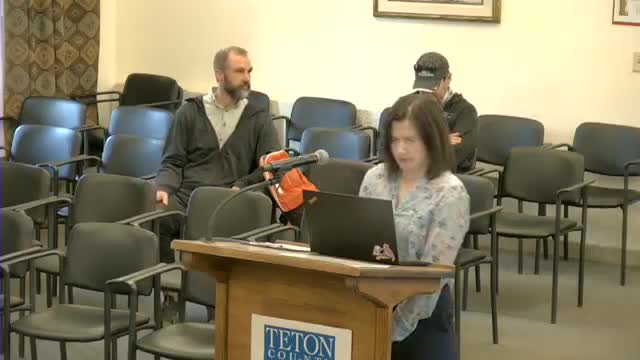Teton County Commissioners approve modeling study for traffic evacuation scenarios
June 03, 2025 | Teton County, Wyoming
This article was created by AI summarizing key points discussed. AI makes mistakes, so for full details and context, please refer to the video of the full meeting. Please report any errors so we can fix them. Report an error »

In a recent Teton County meeting, officials gathered to discuss critical infrastructure planning, particularly focusing on evacuation scenarios in the event of wildfires. The atmosphere was charged with urgency as commissioners examined the implications of various transportation models on community safety.
The discussion centered around the proposed East West connector, a potential roadway that could significantly impact evacuation routes. Commissioner Gardner raised questions about the exact nature of this connector, highlighting the varying interpretations among community members. Would it link directly to the highway, or could it take a more flexible route, possibly connecting to High School Road? The response from county officials indicated that the modeling would explore both options, allowing for a comprehensive analysis of traffic flow and evacuation times.
The modeling is crucial, especially in light of the increasing wildfire risks in the region. Officials noted that simulations would assess evacuation times from various neighborhoods, including Boyle's Hill and Melody Ranch, in scenarios where a wildfire might threaten the area. This data is vital for understanding how well the current infrastructure can handle emergencies and whether expansions, such as widening High School Road, are necessary to maintain safe evacuation routes.
Commissioner Carlman emphasized the importance of moving forward with the contract amendment for the Teton County bridal demand model, which will cost up to $109,000. The unanimous approval of this contract reflects a collective commitment to enhancing community safety through informed planning.
As the meeting progressed, it became clear that the decisions made today would shape the future of Teton County's emergency preparedness. With the threat of wildfires looming, the county's proactive approach to infrastructure planning is not just a matter of convenience but a crucial step toward safeguarding lives. The discussions held in this meeting will resonate in the community, as residents look to their leaders for assurance and action in the face of potential disasters.
The discussion centered around the proposed East West connector, a potential roadway that could significantly impact evacuation routes. Commissioner Gardner raised questions about the exact nature of this connector, highlighting the varying interpretations among community members. Would it link directly to the highway, or could it take a more flexible route, possibly connecting to High School Road? The response from county officials indicated that the modeling would explore both options, allowing for a comprehensive analysis of traffic flow and evacuation times.
The modeling is crucial, especially in light of the increasing wildfire risks in the region. Officials noted that simulations would assess evacuation times from various neighborhoods, including Boyle's Hill and Melody Ranch, in scenarios where a wildfire might threaten the area. This data is vital for understanding how well the current infrastructure can handle emergencies and whether expansions, such as widening High School Road, are necessary to maintain safe evacuation routes.
Commissioner Carlman emphasized the importance of moving forward with the contract amendment for the Teton County bridal demand model, which will cost up to $109,000. The unanimous approval of this contract reflects a collective commitment to enhancing community safety through informed planning.
As the meeting progressed, it became clear that the decisions made today would shape the future of Teton County's emergency preparedness. With the threat of wildfires looming, the county's proactive approach to infrastructure planning is not just a matter of convenience but a crucial step toward safeguarding lives. The discussions held in this meeting will resonate in the community, as residents look to their leaders for assurance and action in the face of potential disasters.
View full meeting
This article is based on a recent meeting—watch the full video and explore the complete transcript for deeper insights into the discussion.
View full meeting